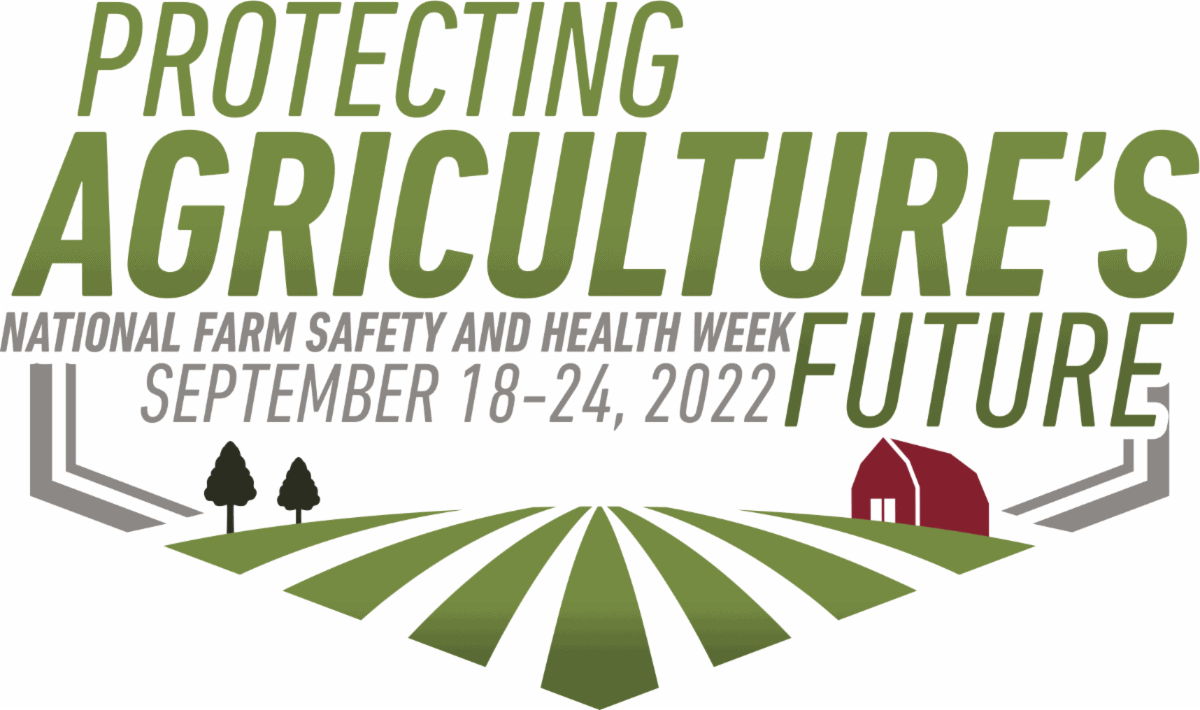Protecting Agriculture’s Future –Wisconsin Farm Safety & Health Week
John Shutske, UW-Madison Extension Agricultural Safety & Health Specialist
Scott Heiberger, Communications Manager, National Farm Medicine Center &National Children’s Center for Rural and Agricultural Health and Safety
Andrea Klahn, UW-Madison Outreach Specialist, AgrAbility of Wisconsin
Later this month, Wisconsin’sGovernor will issue his proclamation for “Wisconsin Farm Safety and Health Week,” a tradition started a few years ago to parallel National Farm Safety and Health Week, first proclaimed by President Franklin D. Roosevelt in 1944. The theme of this year’s observation is, “Protecting Agriculture’s Future.”
The proclamation cites the importance of protecting all who work in agriculture, including farmers, ranchers, specialty crop producers, family members, and hired farm workers. Agriculture is a major economic player in Wisconsin and surrounding states. In Wisconsin alone, 64,000 farms form the base of an industry that adds $104.8 billion each year including farm operations along with the food manufacturing, processing, and transportation sectors. These industries connect deeply and add to the vitality and health of rural and urban communities. In the last couple years, we’ve seen the impacts when there is instability and uncertainty in agriculture. This includes the impacts of COVID-19 on workers on farms and in related businesses. In 2022, we’ve also seen how major global events like war can ripple through the worldwide economy and impact our ability and confidence to feed a global population.
Agriculture is vital to peace and economic stability—yet agriculture is also dangerous. Data from the National Safety Council indicate that we have about 500 deaths of adult agricultural workers each year. In addition, one child dies because of exposure to hazards in the farm workplace every three days. The number of non-fatal injuries that require medical care and treatment exceeds 100,000 annually in the US. The most recent official reports for Wisconsin agricultural-related fatalities documented41 deaths in 2017 and 34 in 2018. Totals for2019 and 2020 and will be released later this fall and appear to be down slightly. We know that about one in five farms will be the site of an injury in Wisconsin in 2022—80% of those people injured will need medical care.
Beyond fatal and non-fatal injuries, farmers are exposed to hazards that are not as prevalent in most other industries. For example, producers who chop corn, alfalfa and other plant material and store the crop to make silage will likely have the risk of exposure to “silo gas” or nitrogen dioxide. This toxic gas can cause serious health effects or even death. Other examples include gases from manure storage structures, grain dust, flowing grain, and high levels of noise.
So, what do we need to do to ‘Protect Agriculture’s Future’? How can we reduce the burden and exposure to these hazards that cause loss of life, pain and disability, and long-term economic consequences for families, workers, and their employers? Here are a few priority ideas highlighted in the proclamation that we should consider during Farm Safety Week and year-round:
Education and Training: Every worker needs information to do the job safely and correctly. Even older, experienced operators can benefit from “brushing up” by doing a read-through on the operator’s manuals of all machines they use. With many types of equipment, we may only use them a few days or weeks during the year. It’s easy to “forget” about key maintenance, lubrication, and preparation. Tragic injuries often happen during the stress and frustration of a breakdown.
All hired workers who join the workforce of a farm, no matter how big or small the operation might be, need frequent reminders and periodic, informal (and formal) training. Don’t fall into the trap of the notion that “you can’t teach an old dog new tricks.” Even highly experienced workers will benefit from conversations about safety. The added benefit is that the employer will often learn a thing or two about how to improve the situations that are most risky.
In addition, youth working on farms must have proper education. Tractor and machinery certification programs are available for 14-and 15-year-old hired workers. This program is a legal requirement through the US Department of Labor. Training and education for kids is critical, but the education must be geared toward the age and ability of the child. Any job assigned to a young person must be carefully matched to both their physical and mental/decision-making abilities.
Creating a Safer Workplace: Training and education can work well, but only if those working on farms work purposely to get rid of hazards, re-design working spaces, or invest time and dollars in safety equipment and safe machines. We know that simply asking people to “workaround” a dangerous hazard like unguarded equipment, a tractor with no rollover protection, or an unprotected height (bin, silo, ladder, roof, etc.) will eventually lead to a bad outcome—either a disabling injury or death. When we work with purpose to remove hazards through doing work differently, or in some cases, replacing heavy physical work with safe machines or other technology, we improve safety while also protecting our bodies from dangerous wear and tear.
Leadership and Partnerships: The farm safety and health issue is complex, but it’s not new. Many of the contributing factors are deeply rooted in the way we think about the industry. Farmers, agricultural organizations, healthcare providers, researchers, educators, and others who care deeply need to be at the table to continue conversations about prevention. We need conversations about whether or not we truly accept the health, injury, and well-being impacts to the ag industry. In some cases, this involves challenging the status quo. In other cases, farmers and others should work together to use their ingenuity, resilience, and ability to innovate to figure out HOW to make the industry safer and more sustainable for those who work on farms.
As mid-September approaches, we will observe Farm Safety Week again for the 79thtime in the US. Fortunately, since 1944, we’ve seen many improvements in the lives and safety of farmers, family members, and farm workers. But we still have a long way to go. Spend some time to think about how you can best play your part!
###
Note –National (and Wisconsin) Farm Safety and Health Week is September 18-24, 2022
Find the Wisconsin Proclamation here:
https://evers.wi.gov/Documents/Proclamations/092020_Accessible%20Proclamation_National%20Farm%20Safety%20and%20Health%20Week.pdf
If you’d like a copy of the original text and photo of the “official” proclamation, send an email to John Shutske –shutske@wisc.edu.
The graphics provided here have been prepared for national use and can be re-printed.
For more information on the programs and affiliation of the three authors, go to:
John Shutske - https://agsafety.wisc.edu/
Scott Heiberger - https://www.marshfieldresearch.org/nfmc & https://marshfieldresearch.org/nccrahs
Andrea (Annie) Klahn - https://agrability.bse.wisc.edu/
National Farm Safety and Health Week 2022 Logo (.png)

